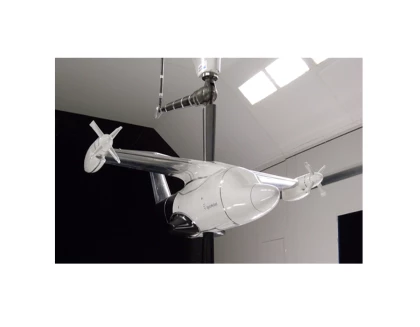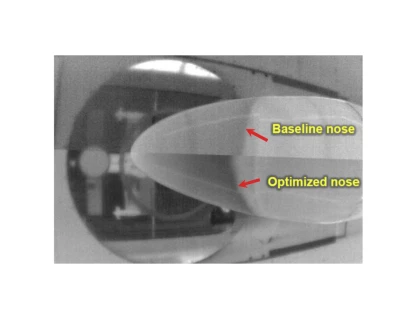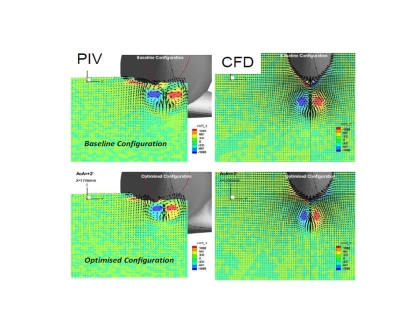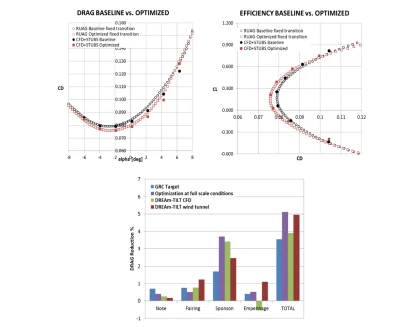
Background
Tiltrotors are relatively new aircraft concepts which have become particularly attractive only in recent years since they are envisaged to be an effective tool for air-traffic decongestion. As such, experimental aerodynamic assessment of tiltrotors is rather scarce. To this purpose, extensive wind tunnel tests coupled with CFD may be used as a valid strategy to answer aerodynamic questions associated with such kind of aircrafts, especially regarding controllability and stability issues. In addition, regarding aircraft numerical optimization via advanced multi-objective algorithms, this often remains a pure academic exercise and there are very few examples in which numerical results are verified through the manufacturing of optimized components and subsequent testing in wind tunnel.
Strategy
In DREAm-TILT, the aerodynamic performance of a series of optimized fuselage components of ERICA civil tiltrotor was assessed, both through wind tunnel tests and numerical simulations, and drag reduction with respect to the starting configuration was quantified.
The above mentioned optimized components (i.e. wing/fuselage junction, wing/nacelle junction, nose, landing gear sponson and empennage) were derived from the CODE-Tilt project, in which Computational Fluid Dynamics (CFD) coupled with innovative design methodologies based on multi-objective evolutionary algorithms were used for minimizing drag and enhancing the aircraft aerodynamic efficiency.
In particular, a wind tunnel campaign on a 1/8 scaled model of both the baseline and optimized ERICA fuselage was carried out at RUAG Large Wind Tunnel (LWTE): all the optimized components were tested sequentially with the aim of identifying the contribution of each component to the overall aerodynamic performance of the fuselage. Additional classic flow visualization techniques and infrared thermography were also used to enhance knowledge on the laminar to turbulent transition and separation regions for the different drag reduction configurations. Finally, PIV visualization was performed by CIRA to characterize the wake from the rear fuselage.
Outcomes
The overall measured drag reduction on the optimized fuselage was equal to 4.8%, with the largest contribution coming from the optimized sponson, followed by the optimized wing/fuselage fairing; the alleviation of the wake from the optimized sponson coming from PIV measurements was between 15 to 30 counts, and an out of plane vorticity reduction between 20% and 35% was registered. As such, a meaningful enhancement of aerodynamic efficiency was achieved, with no detrimental consequences on stability. The wind tunnel measured drag reduction was consistent with CODE-Tilt predictions and this demonstrated that multi-objective evolutionary optimization techniques coupled with CFD can be advantageously applied in aircraft design, reducing experimental and development costs.
In parallel, an extensive CFD campaign was carried out: the numerical results on both the baseline and optimized ERICA geometries were compared and fully validated against the acquired wind tunnel data. Finally, the validated numerical models were used for the assessment of the aerodynamic performance of the optimized ERICA fuselage at full scale conditions (Mach = 0.58), including the rotor effects. The predicted overall drag reduction at full scale conditions and design incidence coming from simulations was equal to 4.2%.
Duration: June 2013-May 2015
This project has received funding from the Clean Sky Joint Undertaking (JU) under grant agreement No. 336439









